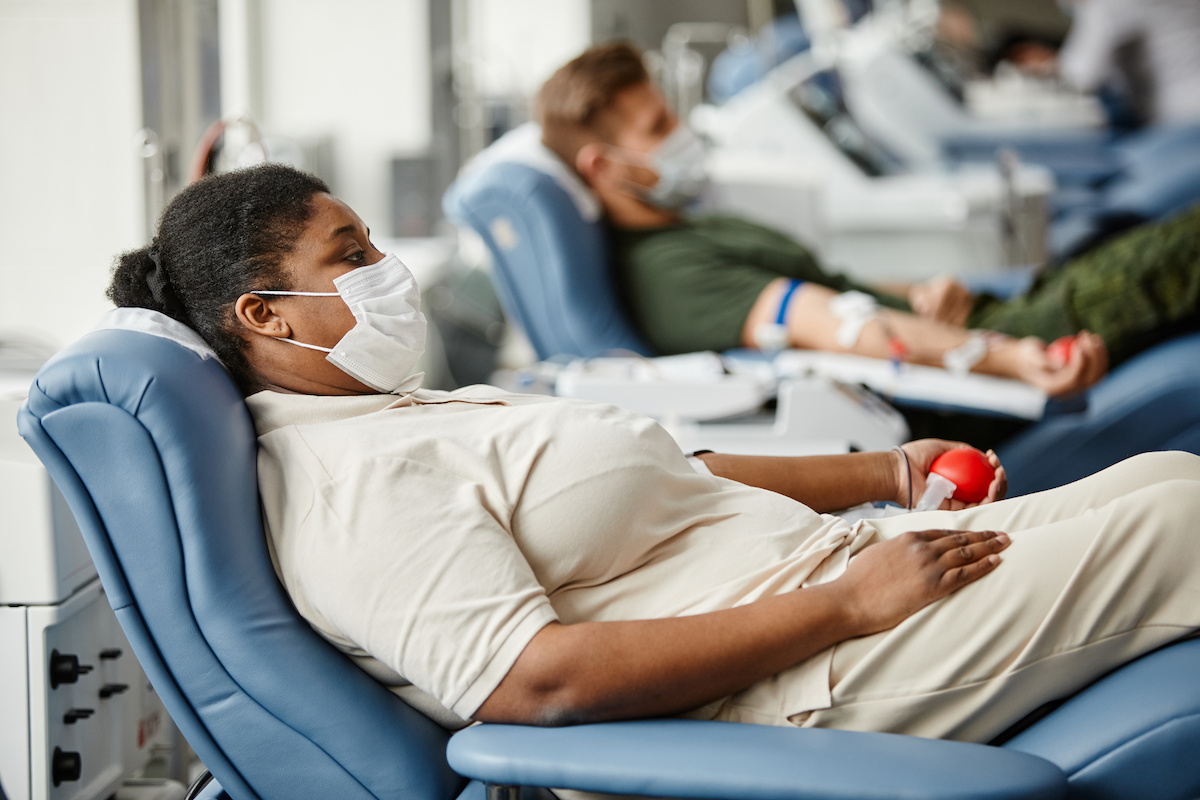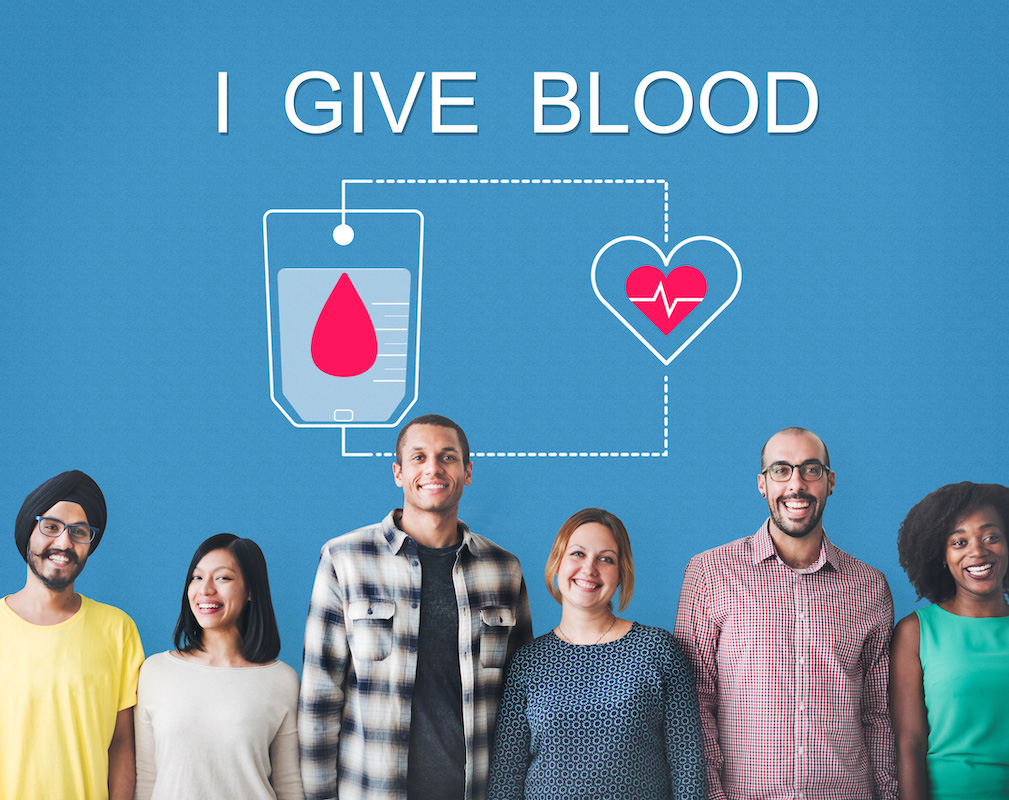Understanding Sickle Cell Disease
Sickle cell disease (SCD) is a genetic condition that affects the hemoglobin in red blood cells (RBCs), causing the RBCs to change shape from round to crescent- or ‘sickle’-shaped. The inflexibility of the sickle-shaped RBC can lead to blockages in blood vessels, and can result in organ damage, decreased oxygen flow, and intense pain.1 RBC transfusions are frequently used to treat complications associated with SCD such as anemia, acute chest syndrome, stroke, and pain, four complications associated with SCD.2
The ability to receive a compatible blood transfusion is a critical factor in saving the lives of patients suffering from various illnesses, including SCD. However, SCD patients often face significant difficulties in receiving compatible blood transfusions.3,4 Identifying rare donors, recruiting them, and engaging with them are all necessary parts of the process to provide rare blood to patients wherever and whenever it is needed.4
The Challenges of Finding Compatible Blood
Matching blood for SCD patients is particularly challenging, and a close match between donor and recipient blood is crucial to avoid dangerous transfusion reactions. SCD patients have a tendency to produce many alloantibodies, and are at an increased risk of transfusion-related complications from RBC alloantibodies.4,5 This can make it more difficult to find a compatible donor in the future.4,5 Only 1 in 2 Type O African American donors are a match for SCD patients,6 making it even more important to increase the number of African American donors. Today, there aren’t enough blood donors to help meet this urgent need. African American individuals make up 13% of the U.S. population, but less than 3% of blood donors.7
Decline in Blood Donations
According to the American Red Cross, blood donations have declined by 10% since the beginning of the COVID-19 pandemic. The decline in blood donations is concerning as it affects the availability of necessary blood for those in need, including patients with SCD. The decline in blood donations has a significant impact on the ability to match blood for patients, further increasing health disparities in this community.3,4
Donor Diversity
Donor diversity is having blood donors that represent a wide range of age, gender, race and ethnic backgrounds, and blood types. Beyond the well-known blood types of A, B, O and AB, there are more than 600 known antigens for red blood cells, and some antigens are unique to specific racial and ethnic groups.8 All of the blood antigens are encoded by inherited genes, so it is often easier to look in the population of donors that are similar in racial/ethnic background to the patient.9
Donor Diversity Saves Lives

Importance of Diversity in the Donor Pool
A diverse blood supply for a healthier world
Diversity in the donor pool helps to ensure that patients receive blood that is as close a match to their own blood as possible, reducing the risk of adverse reactions and increasing the chances of a successful transfusion. AABB states that, “Having a large, diverse blood donor pool offers the best chance of finding compatible blood quickly.4

What can you do to help?
Join the movement for diversity in blood donation #Donate4Diversity
Donate blood and encourage others to do the same. By increasing the diversity of the donor pool, we can help to break the barriers for patients with rare blood types have access to safe and effective blood transfusions, regardless of their race or ethnicity. Make a difference today and sign up to donate blood.
Reasons to #Donate4Diversity
- Sickle cell patients may need
100 units of blood each year .10 Only 2% of all blood donors are a match for a sickle cell patient. 121 in 3 African American blood donors is a match for a sickle cell patient.11- African Americans make up
less than 3% of blood donors .13
Upcoming #Donate4Diversity Blood Drives
- Other dates & locations coming soon!
References
- National Heart, Lung and Blood Institute. Sickle Cell Disease. National Institutes of Health; 2022. Accessed February 10, 2023. https://www.nhlbi.nih.gov/health/sickle-cell-disease.
- Howard J. Sickle cell disease: when and how to transfuse. Hematology Am Soc Hematol Edu Program. 2016;1:625-631. Doi: https://doi.org/10.1182/asheducation-2016.1.625
- Red cross declares first-ever blood crisis amid omicron surge. News release. American Red Cross. January 11, 2022. Accessed February 10, 2023. https://www.redcross.org/about-us/news-and-events/press-release/2022/blood-donors-needed-now-as-omicron-intensifies.html.
- Diversity in the blood donor pool protects patients in need of rare blood. News release. AABB Newsfeed. March 21, 2022. Accessed February 10, 2023. https://www.aabb.org/news-resources/news/article/2022/03/21/diversity-in-the-blood-donor-pool-protects-patients-in-need-of-rare-blood.
- Tormey CA and Hendrickson. Transfusion-related red blood cell alloantibodies: induction and consequences. Blood. 2019;133(17):1821-1830.
- Why do sickle cell patients need blood donors? OneBlood. Accessed February 10, 2023. www.oneblood.org/lp/sickle-cell.stml.
- Give the Gift of Blood in Honor of Danyel Pitts. American Red Cross. Accessed February 10, 2023. https://www.redcross.org/local/illinois/about-us/news-and-events/press-releases/give-the-gift-of-blood-in-honor-of-danyel-pitts-.html.
- The color of blood: Red Cross reflects on its blood collection history. News release. American Red Cross. February 7, 2023. Accessed February 10, 2023. https://www.redcross.org/about-us/news-and-events/press-release/2021/the-color-of-blood–red-cross-reflects-on-its-blood-collection-hiistory.html.
- AABB News: diverse donor pool saves lives. News release. AABB Newsfeed. March 14, 2022. Accessed February 10, 2023. https://www.aabb.org/news-resources/news/article/2022/03/14/diverse-donor-pool-saves-lives.
- Join the Fight Against Sickle Cell Disease. American Red Cross. Accessed Feb 10, 2023. https://www.redcrossblood.org/donate-blood/blood-types/diversity/sicklecell.html
- Why are African American blood donations important? American Red Cross. Accessed February 10, 2023. https://www.redcrossblood.org/donate-blood/blood-types/diversity/african-american-blood-donors.html.
- What are the rarest and most common blood types? Medical News Today. Accessed February 10, 2023. https://www.medicalnewstoday.com/articles/most-common-blood-type-by-race.
- Blood donations safety. National Heart, Lung and Blood Institute. Accessed February 17, 2023. https://www.nhlbi.nih.gov/education/blood/social-media-resources/blood-donations-safety.




